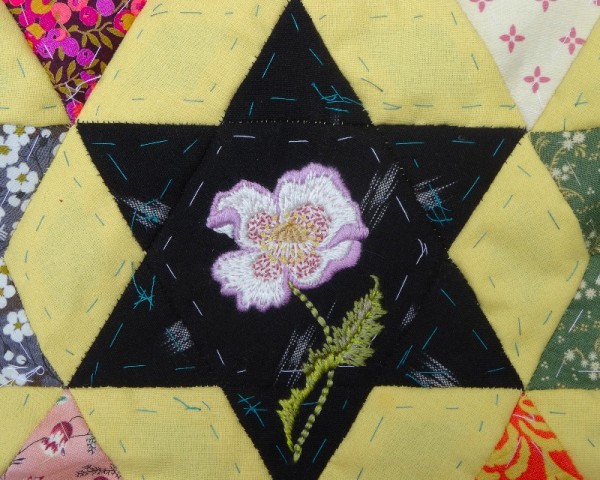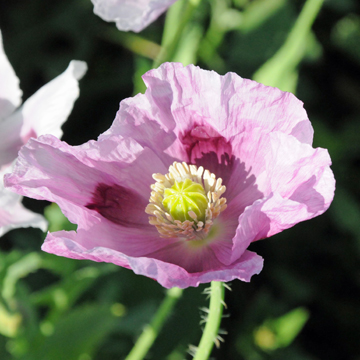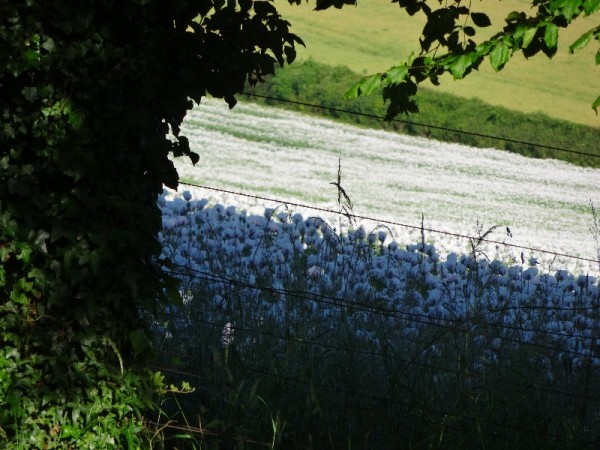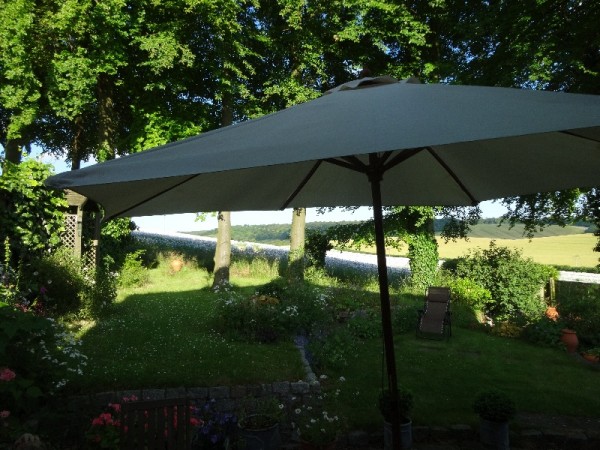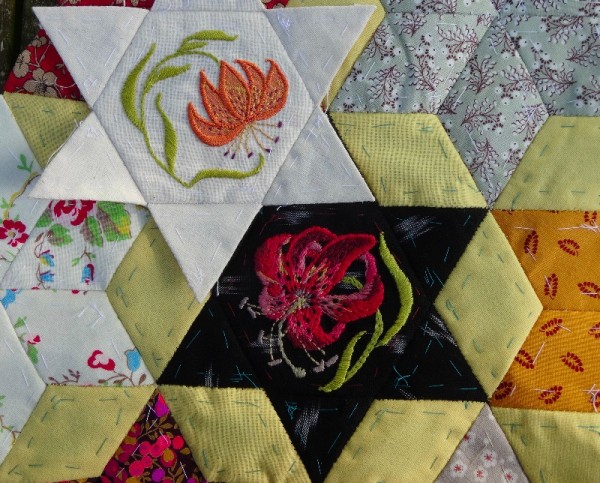
Altar frontal: revised lily and original lily (hand embroidered by Mary Addison)
My original lily was undoubtedly a tiger lily (L. lancifolium) which I associate so strongly with childhood gardens that I was quite taken aback to discover has only been cultivated in England for about 200 years. But my ignorance puts me in some excellent company for Gertrude Jekyll so loved the Asiatic Tiger lily that she regarded it as an English native, writing, ‘cherished as an old English garden flower… so familiar is it, not only in our gardens, but in old pictures and in the samplers and embroideries of our great-grandmothers’. The fact is it had been sent to London by Kew’s first resident plant collector in Canton, William Kerr, under the aegis of Sir Joseph Banks in 1803. Kerr’s Tiger Lily took to the English soil at Kew in a big way and within 6 years 10,000 had been cultivated.
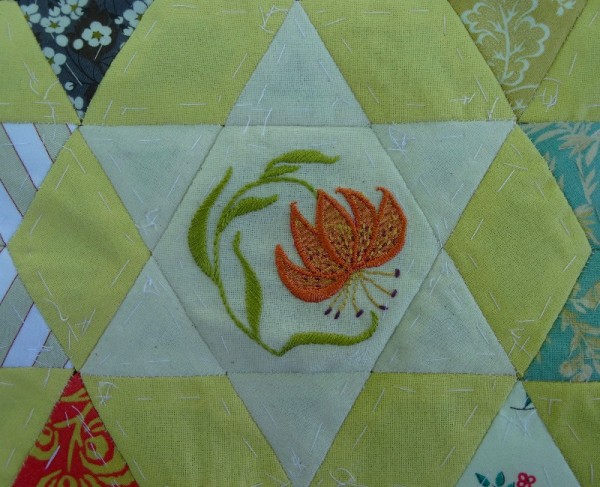
Altar frontal: Tiger lily (hand embroidered by Mary Addison)
Childhood memories of the flower are reinforced by its appearance as a talking plant in Lewis Carroll’s ‘Through the Looking-glass, And What Alice Found there. But fonder associations for me come from Rupert Bear’s Chinese friend, Tiger Lily, whose shining black bob and exotic costume gave me my first introduction to the Orient. When the children were small we named a stripey tabby Tiger Lily as a vague departure from the obvious Tiger (well, we’d had one of those already). So, tiger lilies always seemed rather lovely things – whether plant, animal or a fictitious character.
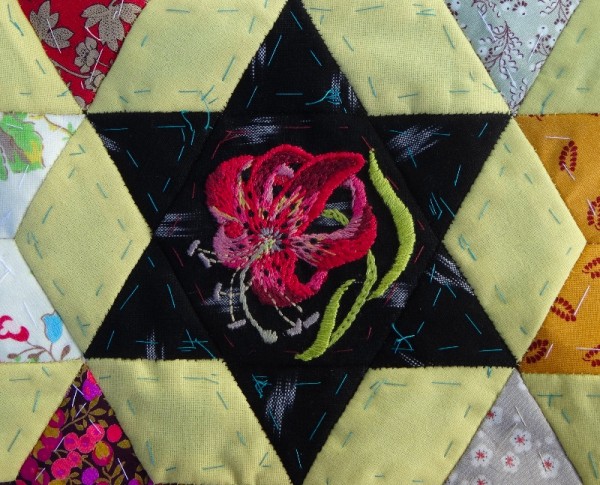
Altar frontal: revised lily (hand embroidered by Mary Addison)
The lily I chose to embroider this time is one taken from the book I’ve been reading on Mary Delany (mentioned here). I will add a photograph of the lily plate from the book tomorrow when I return to London for night time nanny duties. (Plate now added below). It’s not a slavish copy but I hope I’ve caught a bit of the colourful impact of Mrs Delany’s brilliant paper cut. (6/10/14: Now I see Mrs Delany’s flower below mine, I can see I did a better job at copying that I thought.)
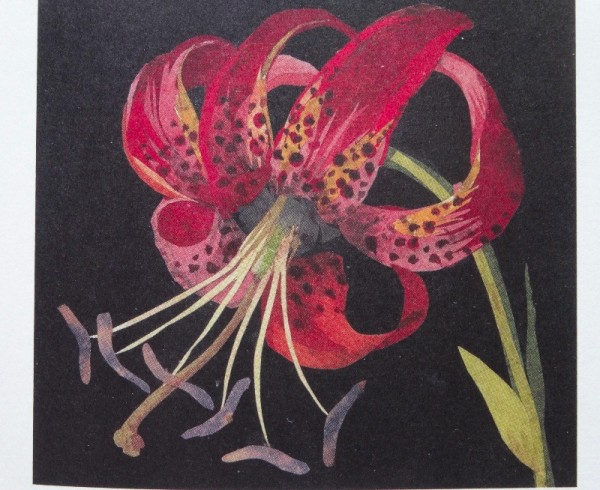
Detail of Mrs Delany’s Canada Lily (from Molly Peacock: The Paper Garden; Bloomsbury 2011)
This red lily is Canada’s elegant spotted Martagon (L. canadense) which the royal apothecary, John Parkinson, had in his garden as early as 1629, referring to it as ‘this strange Lilly (sic)’. The martagons are Turk’s Cap lilies from the Turkish word for a turban style hat because the swept back petals resemble richly coloured silk gathered up bouffant like high on the head. (It now strikes me that the Tiger Lily is also a Martagon.)
My intention in embroidering flowers for the altar frontal was that they should be found locally. The lily has led me to foreign parts but I justify its inclusion by being sure that such one time exotic plants are now to be found in many well tended plots whose gardeners have been unable to resist their beauty and architectural bearing.
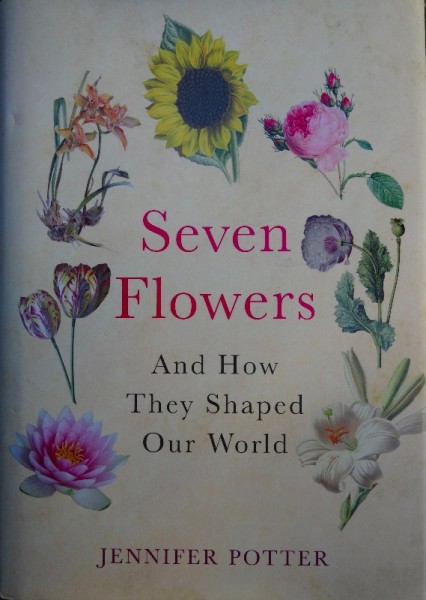
Jennifer Potter: Seven Flowers And How They Shaped Our World (Bantam, 2013(
The lily is one of the flowers in Jennifer Potter’s Seven Flowers And How they Shaped Our World (Atlantic Books, 2013) – a great source of information.

